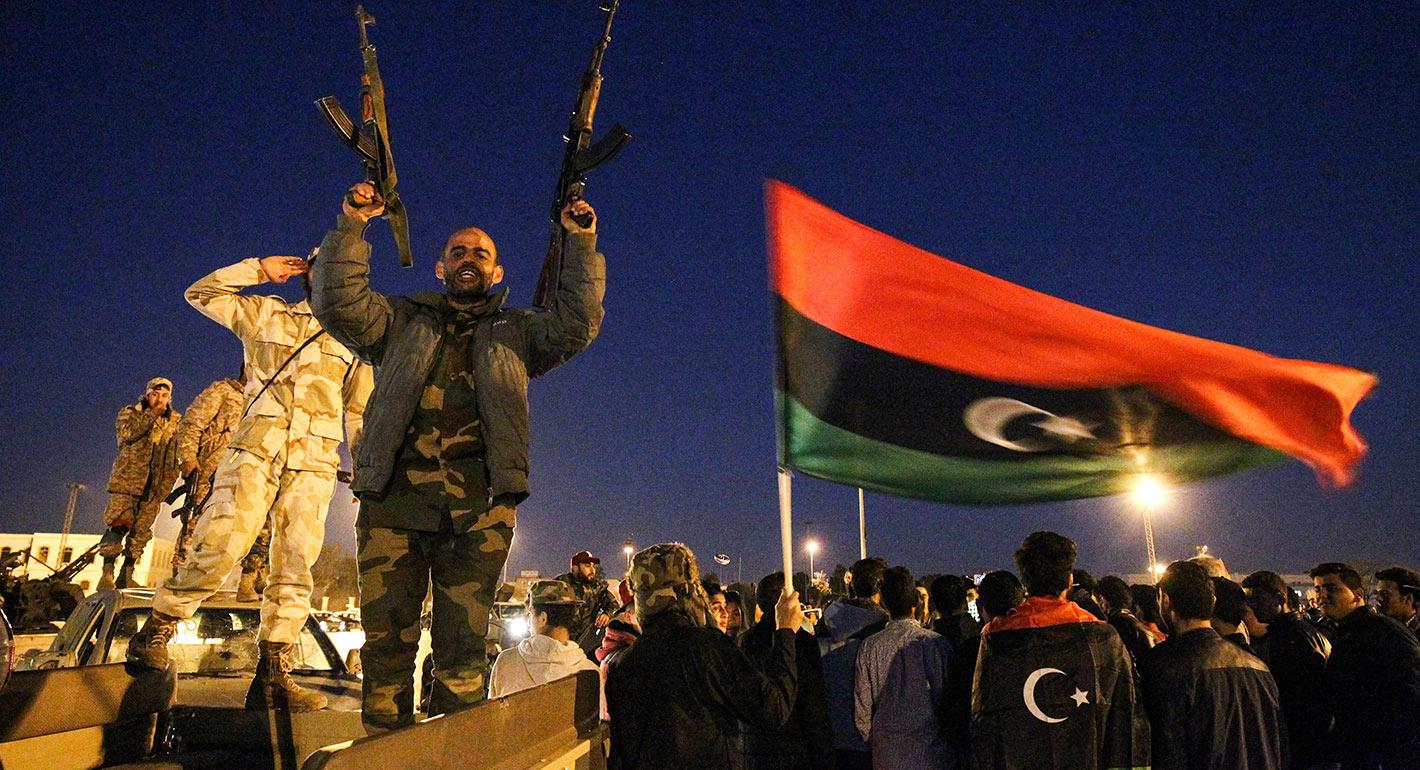Source: New America
Executive Summary
For almost a decade, Libya has been riven by increasingly internationalized conflicts, stemming from local and regional fissures during the 2011 anti-Qadhafi revolution and the NATO-led intervention. In the wake of that conflict, foreign missteps and the failures of Libyan elites to produce political unity and workable institutions opened the field for an escalating proxy war.
Beginning in 2014, Libya’s internecine struggle became militarized, first in Benghazi and then in Tripoli, with a significant uptick in foreign weapons shipments to two opposing constellations of armed groups and political factions. The first was the eastern-based “Operation Dignity” camp, led by General Khalifa Haftar and supported by the United Arab Emirates, Egypt, Jordan, Saudi Arabia, and France. The second was the anti-Haftar “Libya Dawn” coalition in Tripolitania and its militia allies in Benghazi and Derna, backed by Turkey, Qatar, and Sudan. Though outside forces intervened directly with airstrikes and limited raids by special operations forces, Libyans still carried out the actual combat. Starting with Haftar’s attack on Tripoli in 2019, the international actors themselves have assumed a greater prominence in the conflict over local Libyan proxies, via foreign mercenaries, foreign-piloted aircraft, and other forms of interference.
A number of factors have driven the internationalization of Libya’s wars: global disorder and the weakening of multilateral norms and institutions, American ambivalence and mixed signals on Libya, European paralysis, military adventurism by regional powers, and Russian opportunism. However, Libyan elites and local actors themselves also played a key role in internationalizing the conflict by soliciting and manipulating foreign support for self-serving ends.
Amplifying these geopolitical and economic aspects is the convergence of military and technological innovations in the Libyan conflict, especially the widespread use of armed drones and foreign mercenaries. Beyond this kinetic dimension, outside actors have waged a war for public opinion in traditional and social media spaces, often through disinformation tactics that conceal the foreigners’ influence. Even so, notions of a high-tech, sanitized, science-fiction war in which the human (and Libyan) role is absent are misplaced. The fighting remains highly personal for Libyans, who will bear its devastating costs for years to come.
Key Findings:
- Libya’s post-2011 civil wars are a casualty of a broader global disorder and the deterioration of multilateral institutions and norms, as evidenced by divisions and paralysis within the United Nations Security Council. Compounding these trends are American retrenchment and mixed signals, European disunity and partisanship, military assertiveness and hegemonic aspirations by rival Middle Eastern powers, and Russian opportunism. A mix of ideological motives, economic interests, leadership ambitions, and geopolitics has informed the actions of Libya’s foreign interveners.
- In addition to ideological competition and geopolitics, Libya’s oil wealth indirectly drives outside intervention, fragmentation, and conflict prolongation. Libya’s hydrocarbon resources have long been an incentive for international involvement, though it was often not the main motivation for foreign meddling. Access to this wealth became a zero sum prize between competing Libyan factions, who wield it to gain domestic support and entice foreign sponsors. This marketplace dimension, while hardly the sole or even primary conflict driver, differentiates Libya from the Middle East’s other proxy wars.
- The increasing convergence of military and technological innovations has shaped the kinetic and informational war in Libya. oreigner interveners in Libya have relied extensively on cheap armed drones, which helps mitigate risks to their personnel and evade outside scrutiny—an evasion that is also made possible by international divisions and, in the case of the United Arab Emirates, Western diplomatic protection. In addition, foreign mercenaries and auxiliaries have been used by both Libyan factions and their foreign patrons, reflecting a global trend toward the outsourcing of extraterritorial military force driven partly by the availability of itinerant, pay-for-hire fighters from failed revolutions and civil wars in Africa and the Middle East and the growth of private military companies. In tandem, outside states are using traditional media outlets, social media trolls and Twitter “bots,” co-opted journalists and commentators, lobby organizations, and agents provocateurs to wage a sophisticated war for public opinion in which the foreign hand is often obscured.
- Despite the war’s internationalization, Libyans play a vital role as intermediaries, brokers, and fixers for foreign powers. Bereft of institutions, Libya’s fragmented and hyperlocalized landscape has been dominated by Libyan political elites, armed group leaders, and foreign-based brokers who’ve solicited outside patronage to bolster their own power and agendas. Adding an unpredictable layer of arbitration to foreign influence, these brokers have competed with one another and sometimes defected or switched sides, diluting foreign control over local proxies. A net result of this individual, transnational activism has been an attenuation of Libyan sovereignty and a prolongation of the conflict.





